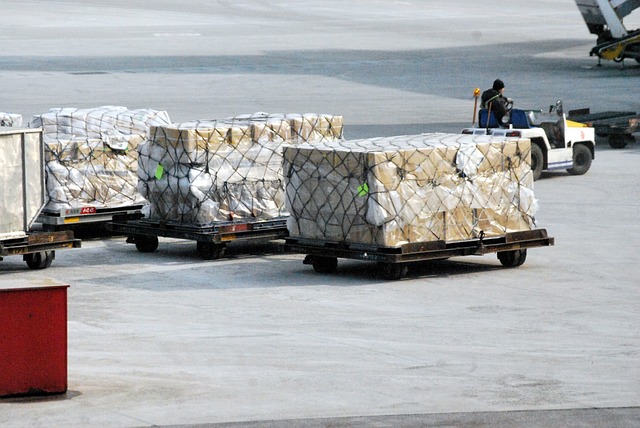As the ebb and flow of commerce shift with the changing seasons, warehouses must adapt to meet fluctuating demand. This often involves ramping up operations for peak periods like the holiday season or scaling down during quieter times. However, these adjustments present their unique challenges that require strategic planning, innovation, and flexibility.
Understanding Seasonal Demand
The first step to adapting warehouse operations to seasonal changes is understanding the patterns of demand. Analyzing historical data is crucial in forecasting demand, allowing businesses to anticipate changes and prepare accordingly. This can involve understanding the specific products that tend to sell more during certain seasons, tracking consumer trends, and gauging the impact of external factors like weather conditions or economic shifts.
Staffing for Seasonal Peaks
One significant factor affected by seasonal demand changes is staffing. During peak periods, warehouses may need additional manpower to handle increased workload. This could mean hiring temporary workers or offering overtime to existing staff. However, this needs to be managed carefully. Overstaffing can lead to unnecessary costs, while understaffing can result in missed opportunities or poor customer service.
Training programs should also be in place to ensure seasonal staff can quickly learn necessary skills and adhere to safety regulations. Cross-training existing employees to perform multiple functions can also enhance flexibility and efficiency.
During peak periods in a warehouse, rolling ladders become essential tools for efficient order fulfillment and inventory management. With their sturdy design and easy mobility, they allow workers to quickly access high shelves and reach products that are in demand, significantly speeding up picking and stocking tasks. Rolling ladders also help improve safety by providing stable access to elevated areas, minimizing the risk of falls or injuries during busy times when workers are handling large volumes of goods. Their role is critical in optimizing workflow and maintaining productivity during the most demanding periods in a warehouse.
Inventory Management
Effective inventory management is pivotal in adapting to seasonal demand changes. Pallets, serving as the backbone of warehouse storage, play a vital role in this process. Palletized goods significantly influence handling efficiency, storage density, and inventory accessibility, all of which can vary with seasonal changes.
During peak seasons, warehousing space can quickly become a limiting factor. The type of pallets used and the way they are stored can directly impact this space. Here, pallet racking becomes an essential tool and best handled when it is provided by a reliable and industry-leading supplier. They can offer a wide range of solutions tailored to the specific needs of your warehouse, ensuring optimal space utilization and enhanced operational efficiency.
Infrastructure Adjustments
Infrastructure may also need adjustments to accommodate seasonal shifts. This can include rearranging the warehouse layout for optimal space utilization, purchasing new equipment like rolling ladders to help staff access stock, or implementing temporary storage solutions like pop-up or mobile warehouses.
Leveraging automation and robotics can also enhance capacity and speed during peak periods. Similarly, during slower seasons, it might be prudent to perform preventive maintenance or upgrades that could disrupt operations during busier times.
Flexibility in Delivery and Returns
Flexibility is a key component of adapting to seasonal demand changes. During peak periods, offering varied delivery options can help meet increased demand and customer expectations. This could include expedited shipping, click-and-collect services, or partnering with third-party logistics providers (3PLs) to extend delivery capabilities.
Returns also tend to increase during peak periods, especially post-holiday. Having a streamlined and efficient returns process can improve customer satisfaction and reduce the burden on warehouse operations.
Sustainability Considerations
In the drive to meet seasonal demand changes, it’s important not to overlook sustainability. This can include optimizing energy use, reducing waste, and promoting sustainable logistics practices. This not only contributes to environmental responsibility but can also result in cost savings and enhanced brand reputation.
Optimizing Staffing Strategies
Staffing strategies should not only cater to seasonal peaks but also to unexpected demand surges. This calls for the creation of a flexible staffing model that can be scaled up or down quickly. Utilizing a mix of full-time, part-time, and contract workers can provide the needed flexibility.
Further, using warehouse automation can reduce the dependency on manual labor and increase operational efficiency. Automated guided vehicles (AGVs), conveyor systems, and robotic picking systems can handle repetitive tasks, freeing up human resources for more complex tasks and reducing the risk of errors.
Enhancing Inventory Management
Advanced inventory management goes beyond real-time visibility. It involves using predictive analytics to anticipate future inventory requirements, facilitating better procurement planning. Coupling this with a robust supplier relationship management can ensure a steady flow of materials even during peak periods.
Also, adopting advanced storage systems, such as vertical storage or high-density storage solutions, can maximize warehouse space utilization. These systems can significantly increase the storage capacity without requiring additional floor space, allowing warehouses to handle higher inventory volumes during peak periods.
Infrastructure Adjustments and Technology Adoption
Infrastructure adjustments should focus on maximizing throughput and minimizing bottlenecks. This involves strategic layout planning that optimizes product flow, reduces handling, and shortens travel distances.
Moreover, integrating technologies like Internet of Things (IoT), Artificial Intelligence (AI), and Machine Learning (ML) into warehouse operations can drive significant improvements in efficiency and accuracy. These technologies can automate various processes, provide predictive insights, and enable real-time decision-making, aiding in managing seasonal demand changes.
Strategies for Delivery and Returns
With the rise of e-commerce, consumers expect faster deliveries and easier returns. Warehouses can meet these expectations by implementing advanced delivery solutions like drone deliveries or automated delivery vehicles. Similarly, adopting an automated returns management system can help handle increased return volumes effectively.
Preparedness and Contingency Planning
Contingency planning should be a continuous process, not a one-time effort. This includes conducting regular risk assessments, scenario planning, and stress testing of operations to identify potential vulnerabilities and devise appropriate response strategies.
Sustainability and Beyond
Sustainability in warehouse operations extends beyond energy optimization and waste reduction. It also involves considering the social and economic aspects, such as fair labor practices, local sourcing, and responsible procurement. Embracing a comprehensive sustainability approach can create a positive impact on the business, society, and the environment.
Adapting warehouse operations to seasonal demand changes is a multifaceted challenge that calls for a holistic approach. Leveraging technology, data analytics, flexible staffing models, advanced inventory management systems, and sustainable practices, warehouses can transform this challenge into an opportunity for enhancing operational efficiency, customer satisfaction, and business resilience.




